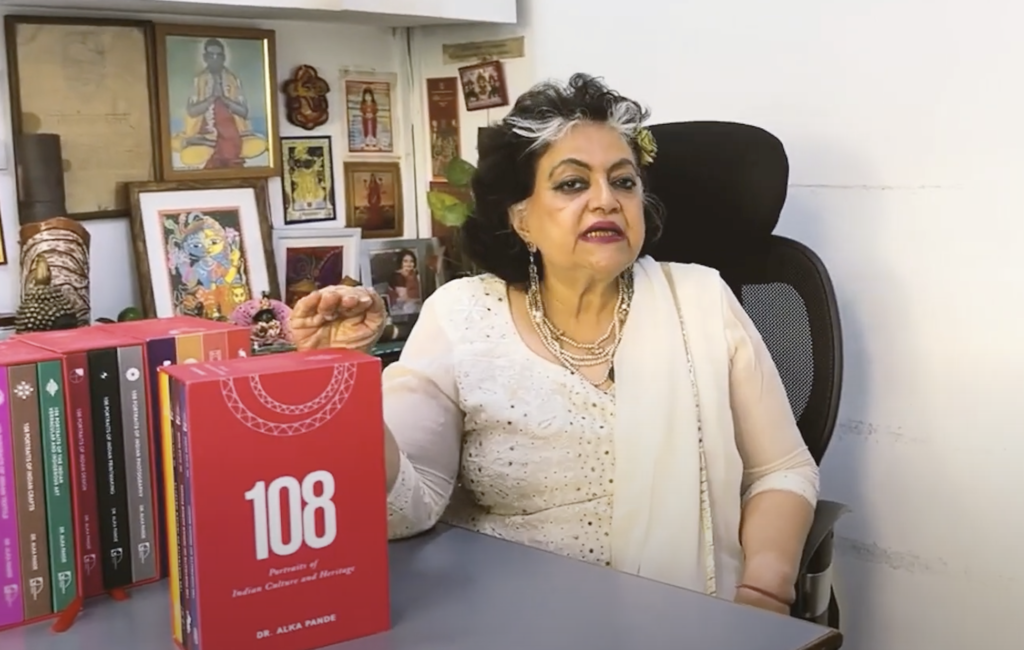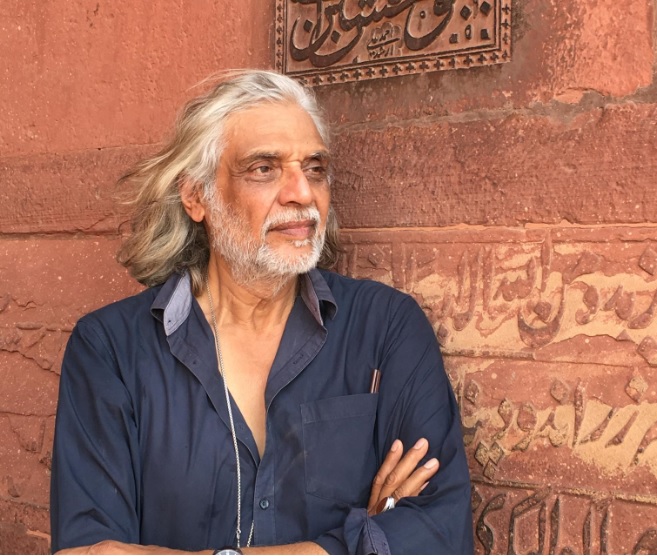Dr Alka Pande is an art historian who has taught Indian Arts and Aesthetics at Panjab University for over ten years. Her major interests include gender identity, sexuality, and traditional arts. She has received numerous awards, including the Knight of the Order of Arts and Letters, the Australian-India Council Special Award, and Chandigarh Lalit Kala Akademi honours to mention a few. Pande has also been involved in curating exhibitions and has been awarded the CIMA Lifetime Achievement Award 2023. She is currently the head of the Visual Art Gallery at the India Habitat Centre, New Delhi. Dr Pande also set up the Bihar Museum Biennale in 2021 and is now the chief curator for the Bihar Museum Biennale.
Recently Dr. Alka Pande released her monumental work, “108 Portraits of Indian Culture and Heritage.” This immersive collection of 14 collectable books, each exploring a distinct discipline such as art, architecture, objects, crafts, and more, showcases her dedication and expertise in the field of Indian art and aesthetics. Dr. Pande’s ability to encapsulate India’s rich cultural history, including illuminating art, architecture, and cultural landscape, while interweaving personal anecdotes, serves as a remarkable source of inspiration. Her work is not only lauded as an invaluable resource for scholars and enthusiasts but also recognised for its significant contribution to preserving and promoting India’s cultural heritage.
To read the previous parts (Click Here)
Iftikar: We talked about museums and the whole discourse around them. One thing I would like to touch upon is the incorporation of technology. The museum is something we associate with antiquity, and technology is something futuristic and upcoming. So, how do you see the marriage of these two elements?
Dr. Pande: I think you cannot keep technology out at all. When I think of museums and antiquities, I think of antiquity, and I don’t like to think of technology coming in at all. Making a hologram of the Didarganj Yakshi is something which is not acceptable to me. But when they’re doing this Van Gogh experience everywhere, you can do that in a museum and take it as an immersive experience, and you can get a different kind of experience from it.
However, in a museum, the flow of energy and rasa that happens between an antique and the visitor is very special. When you bring in technology, you add another layer, another filter. It’s like CMYK; it changes things. But, having said that, technology makes things easier. You have museums that are shown on Zoom. You can’t go to the Met, but you can see the collection of the Met.
So, by spreading information and informing people, technology definitely has a great role to play. You’re getting the metaverse now, and all kinds of new media are taking on completely new ways of presentation. But the experience is different. It is not an immediate experience. I somehow feel the rasa changes, but technology cannot be taken out. It’s a different experience.
Iftikar: So, continuing with this topic, this is about the role of visitors. Recently, we’ve been seeing antiquities and objects being destroyed during the process of taking a selfie. What would you say to visitors who are visiting a museum and are not experts? Museums are considering banning cameras and not allowing selfies. Do you think this is the right practice?
Dr. Pande: You know, the selfie culture is really very annoying for me. Let me tell you, the people who are taking selfies, and I see them at the Bihar Museum all the time, they don’t even look at the objects. I just feel, okay, if they are taking selfies, maybe sometime it will come to their mind to appreciate the object, but that’s a different matter.
Nidheesh: Thank you so much, Dr. Pande. It was such a delight to have this very long conversation. We will come back to you again. I think the viewers of Abir Pothi will also be able to read it on our site. This will be a good reference point for lots of young artists and students of art.
Dr. Pande: Thank you so much.





